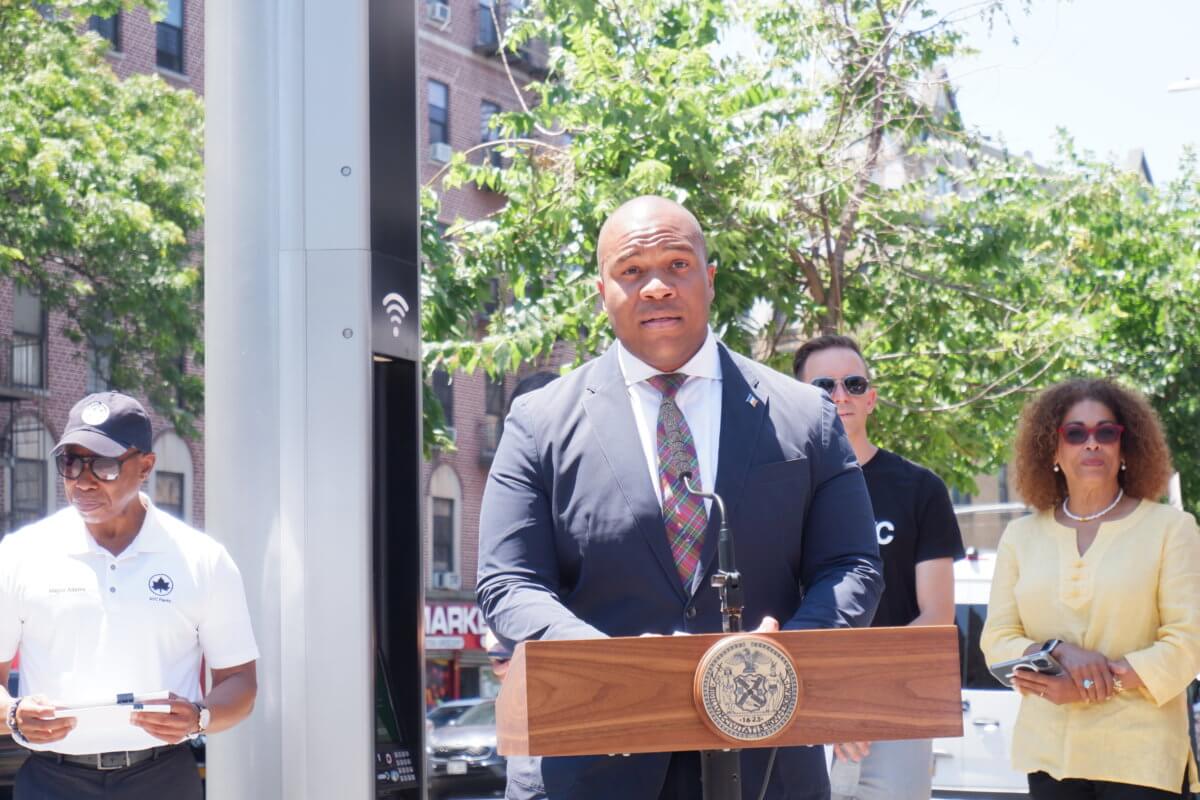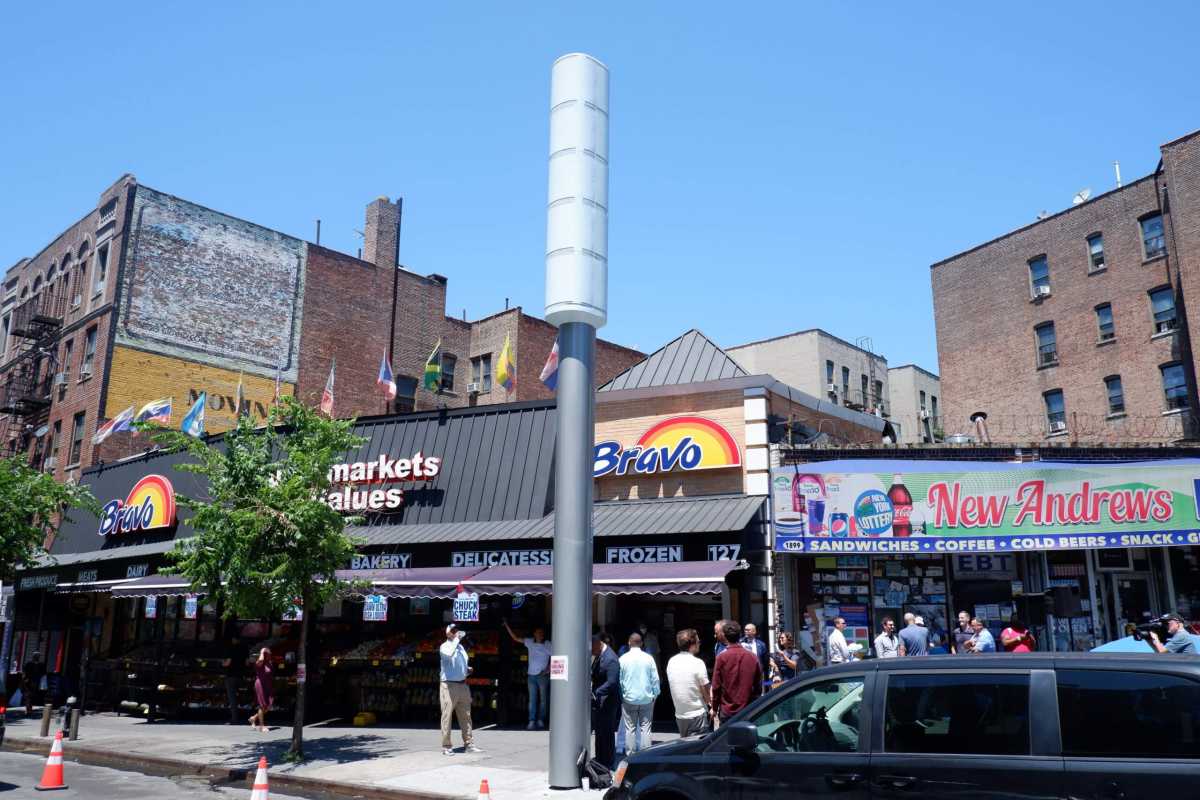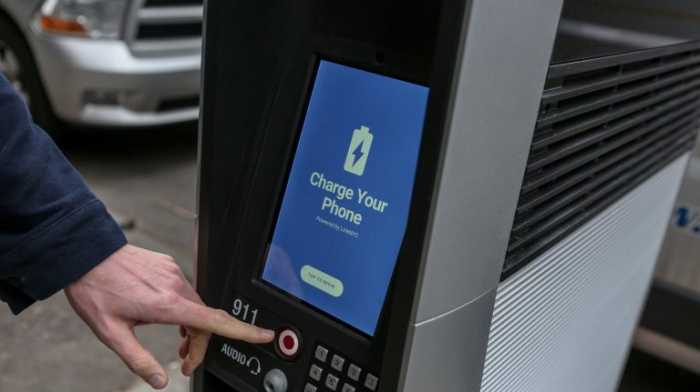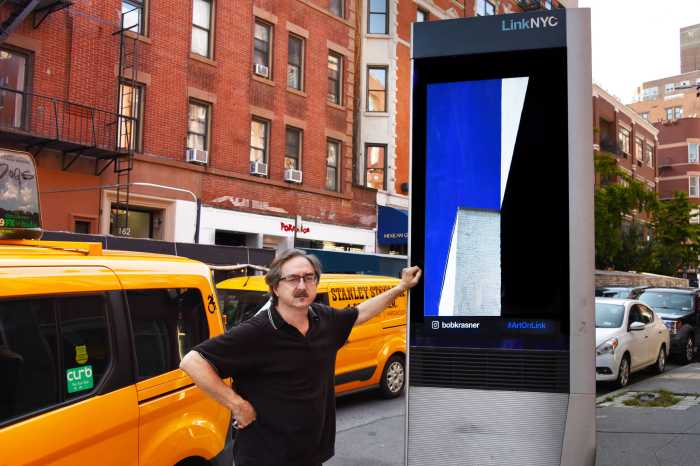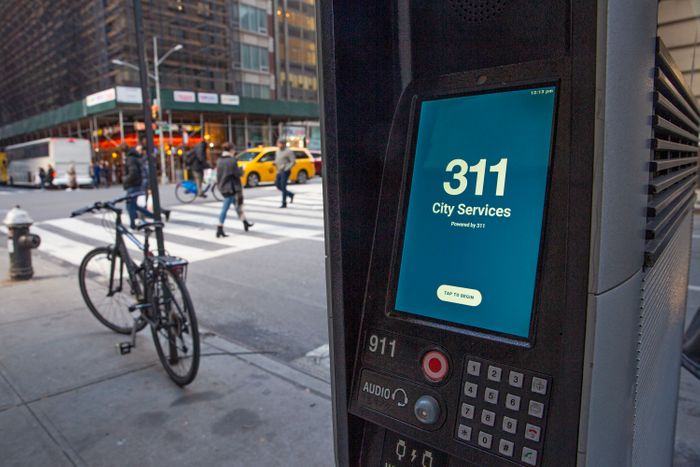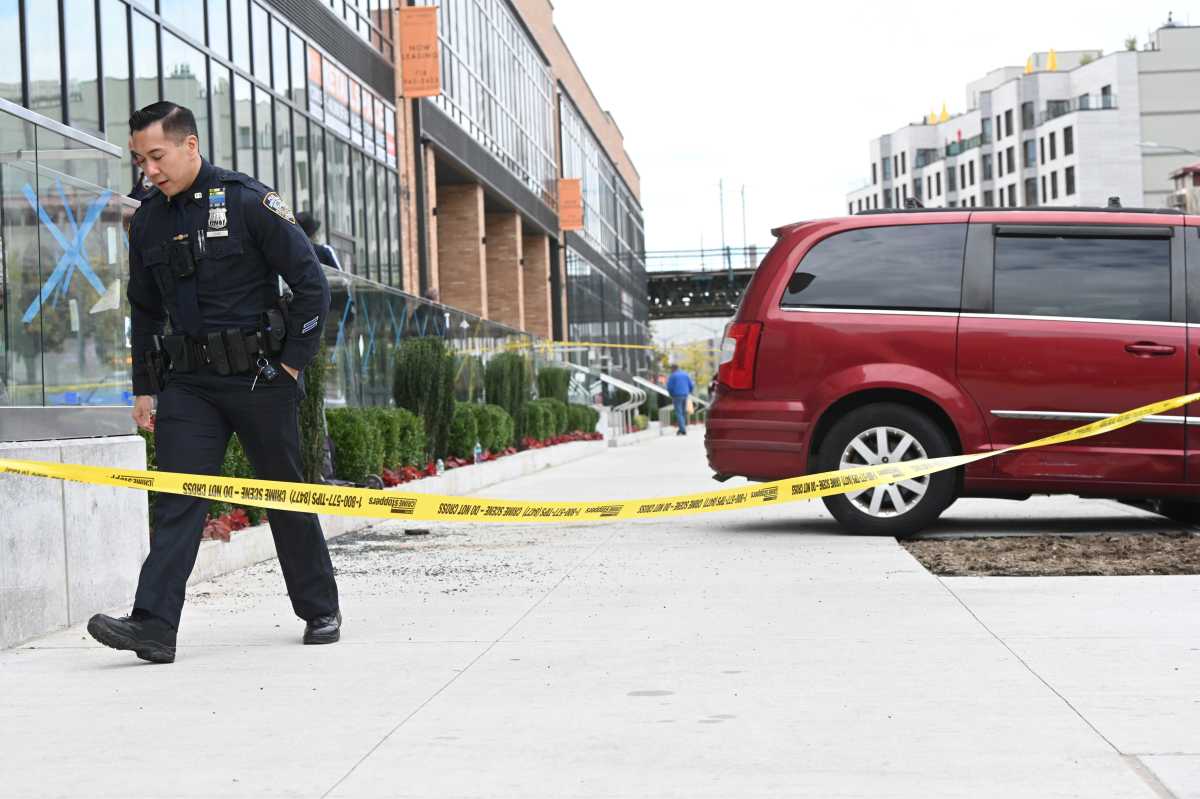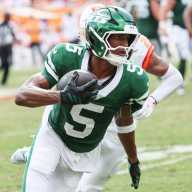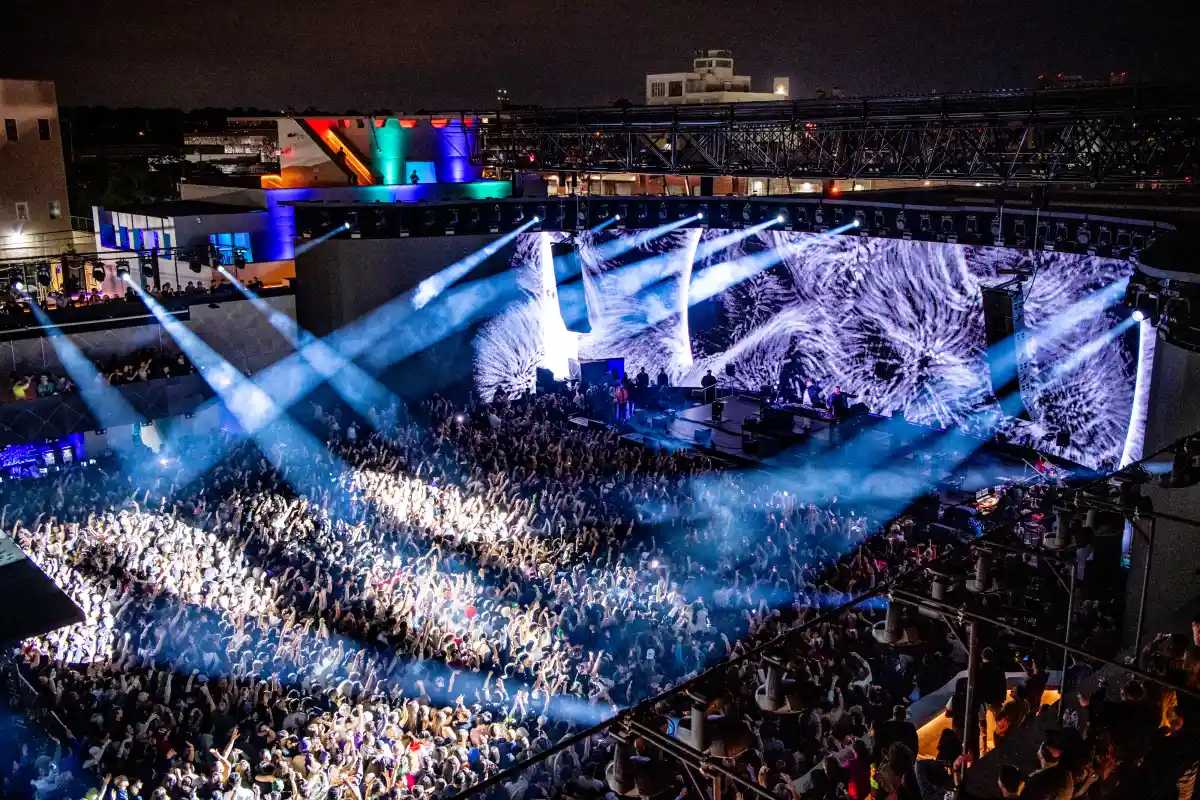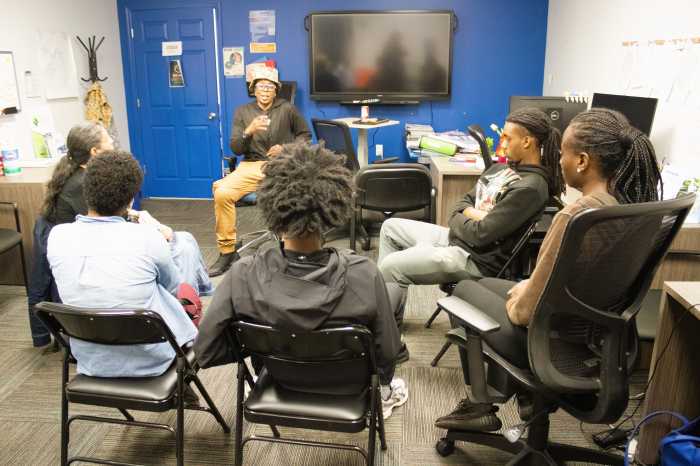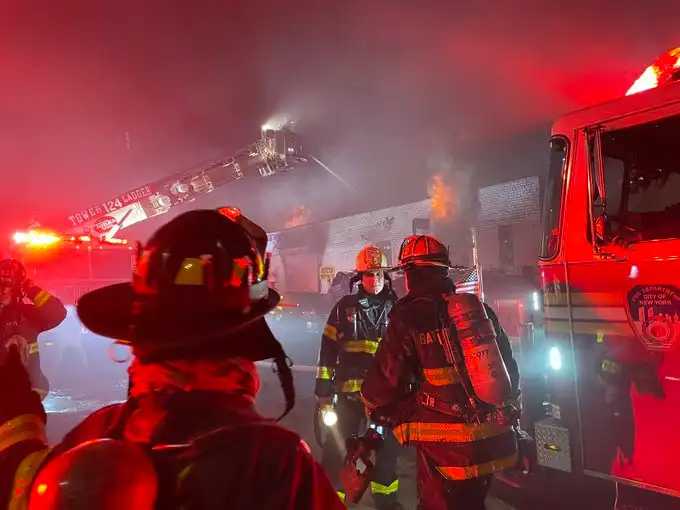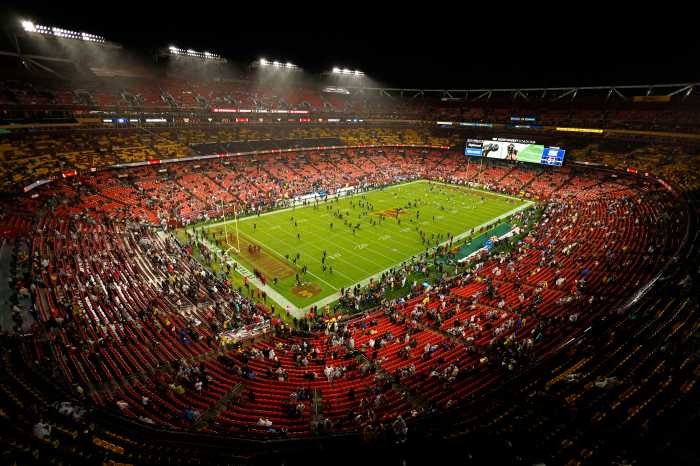New York City kicked off on Sunday in the Bronx the expansion of its LinkNYC program with new massive 32-foot-tall versions of the signal kiosks dubbed Link5G, which will come to streets around the five boroughs over the coming four years.
The city and its private contractor for the project plan to add some 2,000 of the larger poles with a focus on underserved areas, Mayor Eric Adams and city officials said during a press conference on July 10.
“What telephone service was to our grandparents, Wi-Fi is to this generation right now,” said Adams next to one of the first new super-sized towers on W. Burnside Avenue in Morris Heights. “Accessible broadband and phone service, it’s just not a luxury, it’s a necessity. Just as we need electricity and heat and water, these same services they play a vital role in being able to carry out our function — so too is Wi-Fi.”
The new structures are operated as a public-private partnership by consortium CityBridge, and are a revamp of the old 10-foot kiosks the firm set up under former Mayor Bill de Blasio starting in 2015 with free Wi-Fi, USB charging ports, a tablet, a 911 button, and calling capabilities.
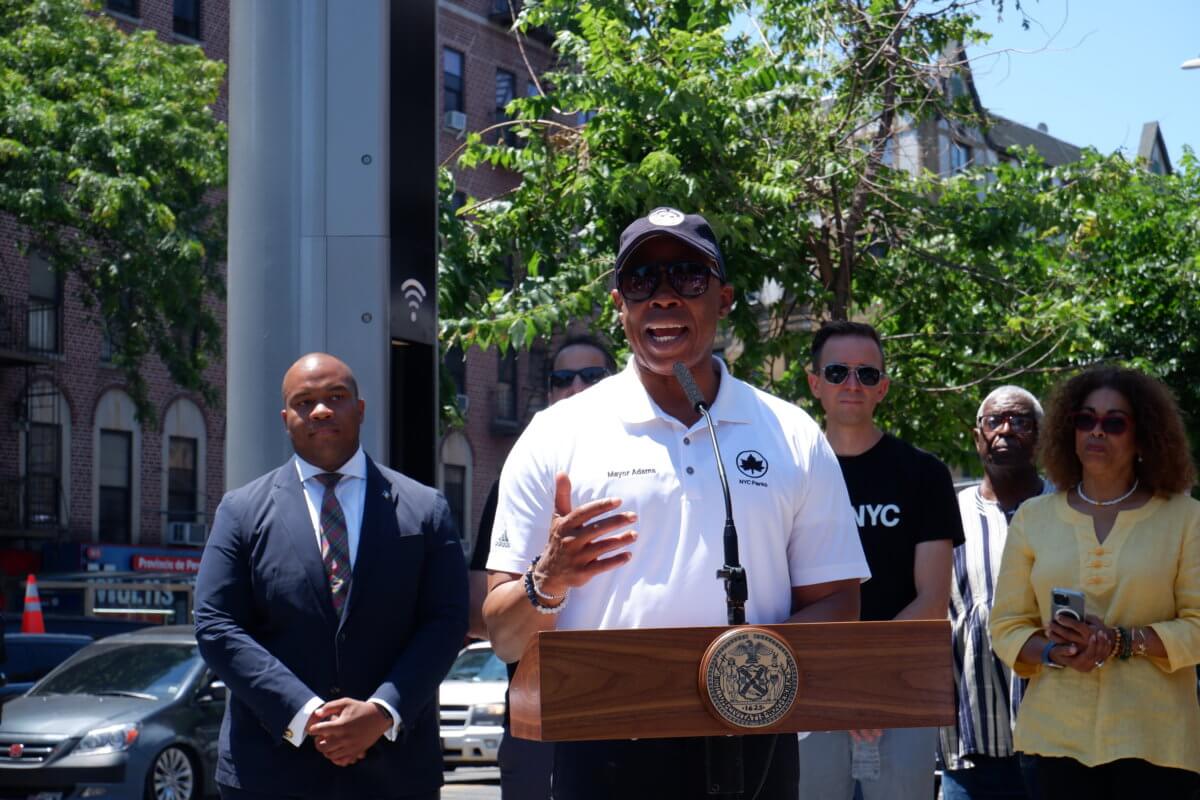
The old ones were supposed to be funded by digital ad displays on the side and the city originally hoped to build 10,000 of them, but the screens did not bring in the promised revenue, which brought the program to a halt with some 1,800 units built largely in Manhattan.
The new pillars have the large additional infrastructure on top for telecom companies to set up 5G networks, and the revised proposal aims to bring in revenues by renting out the poles to such firms like AT&T and Verizon, The City reported.
New Yorkers need a phone plan that includes the high-speed service to connect to the faster signal, but the Wi-Fi and the other old features will remain free.
The city wants to have 4,000 total kiosks by 2026, with 90% of the 2,000 new ones going to the outer boroughs and above 96th Street in Manhattan.
The city’s Public Design Commission last year largely panned the oversized design and has so far only signed off on allowing them in commercial and manufacturing districts, but a senior rep for CityBridge said they’ll ask the PDC to reconsider.
“For Link5G deployment, we can’t just do it in the commercial areas. We need to go to residential areas as well, because the digital divide in New York City is the biggest in the residential areas,” said Robert Sokota, president of the company’s wireless division.
One local was skeptical of the new tech, saying there were more pressing needs in the working-class neighborhood like rent, childcare, inflation, and longer opening hours for parks.
“I’m gonna be honest with you, I don’t think that’s important,” said Apryl Ferguson, who lives just up the block from the new kiosk. “It’s a lot of us who are in need of internet, but I believe that there’s so many things that’s more pressing right now than this.”
The Bronxite also worried about surveillance and that the pillar would harvest private information from people using it.
“It looks like it’s tracking our movements, it’s tracking our phone calls, it’s taking our contacts. I would never use that,” she said. “When I go past here, I’ll turn my phone off.”
The city’s Chief Technology Officer, Matthew Fraser, said the kiosks have a camera, but it’s not on all the time. He claimed that data gathered by the poles will be used in a way that’s “acceptable.”
“We want to make sure that the public feels safe leveraging these devices, and their information is only used in ways that’s acceptable,” Fraser said.
“In terms of surveillance tech, there’s nothing in the devices outside of a camera,” he added. “It’s activated in the event that, periodically it’s not on 24/7, but there’s nothing other than that.”
